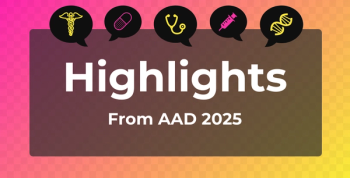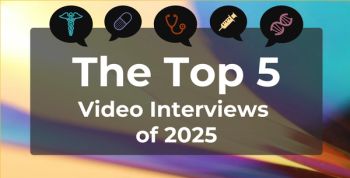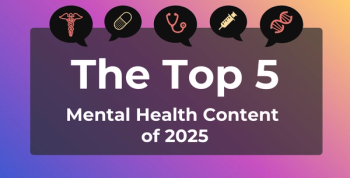
Cutting Specialists From Suicide Hotline Threatens LGBTQ+ Youth, Experts Say
The Trump administration has proposed cutting funding to maintain LGBTQ+ specialists staffing the national suicide hotline, which could disenfranchise a population with high suicide rates.
In October, lesbian, gay, bisexual, transgender, and queer (LGBTQ+) individuals—approximately 1.2 million of whom have called the
Suicide Prevention Hotline Provides Help to Marginalized Group
The suicide prevention hotline, which was established through a law signed by President Donald Trump in October 2020 and launched in July 2022 under the Biden administration, has received more than 14.5 million reach-outs since its inception, helping people across the country get in touch with their local crisis contact center to receive the care that they need. This later included the ability to indicate that an individual’s problems were tied to their identity as an LGBTQ+ individual and allowing for them to be connected to a specialist with experience in that area.
“The specialized services line for LGBTQ+ youth and young adults was not something that was originally available when 988 launched in July 2022,” Hannah Wesolowski, chief advocacy officer at the National Alliance on Mental Illness, told The American Journal of Managed Care®. Wesolowski explained that the pilot first started in the fall of 2022 before becoming permanent. “If a young person who identifies as LGBTQ+ calls or texts the 988 lifeline, they can choose option 3, and what that does is it connects you to a specialized network of services.”
According to The Trevor Project,2 LGBTQ+ young people
“Somebody who calls this specialized services line doesn’t have to explain what they’re facing [and] their background in the same way to somebody who truly understands who they are,” said Wesolowski.
However, on April 29, a leaked budget proposal from the Trump administration indicated that the specialized services for LGBTQ+ individuals might be on the chopping block as part of a cut to mental health funding in the discretionary budget. This funding cut would go through HHS and could take effect as
Cutting Funding Could Have Major Consequences
With the proposal to cut funding for these specialists at the national suicide hotline, LGBTQ+ individuals could face significant barriers to receiving the care they need. Wesolowski emphasized that, although 988 will continue to be offered despite these cuts, it is important to have people who are responsive and inclusive when discussing a caller’s background, including for LGBTQ+ individuals who face social stigmas.
According to KFF, LGBTQ+ individuals are more likely to report stigma and discrimination in their daily lives, with
“My fear, and I think the fear of many advocates, is that if this line were to go away, many youth [who] would have benefited from it will not see 988 as something that’s representative of them and [it will be] something that they wouldn’t want to reach out to in moments where they’re struggling,” said Wesolowski.
The Trevor Project estimates that approximately 19.0% of LGBTQ+ youth aged 13 to 18 years and 8.3% of LGBTQ+ youth aged 19 to 24 years attempted suicide in the past year, totaling approximately
Next Steps in Face of Potential Cuts
This leaked proposal document depicts the Trump administration’s budget plans. However, Congress is not required to follow all of it word for word. According to Wesolowski, advocates like The Trevor Project and the American Foundation for Suicide Prevention along with NAMI are now shifting to making sure that the budget that passes does not include cuts like these.
“We are doing everything we can to educate congressional offices to make sure that they’re aware of the lifesaving benefit of these specialized services,” said Wesolowski. “There are resources out there, but we know we want 988 to be a resource for everyone. That’s the vision of 988: that anyone in crisis can reach out and get the help that’s right for them. And it would be really sad and devastating if it wasn’t a place [that] LGBTQ+ youth felt was a resource for them.”
Advocates are now working on educating both the public and congressional representatives about the specialized services, “just going into offices and educating members of Congress so that they are aware of why this exists and the unique risk that our LGBTQ+ youth face on the mental health and suicide side,” according to Wesolowski. Lobbying, she said, would occur if a budget with this proposal was put in front of Congress.
Wesolowski also emphasized that regular constituents can also influence whether this proposal is ultimately put into the budget later this year. “It’s really important for anyone who cares about this to be contacting their member of Congress. People don’t always realize that any constituent can reach out to their member of Congress and tell them what they want them to do or not to do,” she said.
Sharing stories of how the suicide prevention specialists have helped either yourself or a loved one can help Congress members recognize the benefit of these services, Wesolowski continued, whether on the phone or through online forms on each representative’s website.
Making sure that this service continues going forward is of utmost importance to make sure that LGBTQ+ individuals still have faith in services provided to them, Wesolowski concluded. Undermining 988 after advocating for it and emphasizing its capacity to address LGBTQ+ youth specifically would be the last thing that advocates would want to do.
“I think it’s always important to remember the people who are impacted by this,” she said. “Too much good work and investment has gone into 988 as a lifesaving resource that we can’t back down now.”
References
- Munoz A. 988 suicide prevention service for LGBTQ+ youth faces possible elimination by Trump administration. ABC News. April 29, 2025. Accessed May 2, 2025.
https://abc7.com/post/local-groups-sound-alarm-possible-elimination-suicide-prevention-hotline-lgbtq-youth/16272204/ - Facts about suicide among LGBTQ+ young people. The Trevor Project. December 15, 2021. Accessed May 2, 2025.
https://www.thetrevorproject.org/resources/article/facts-about-lgbtq-youth-suicide/ - Cole C. Trump administration proposes getting rid of crisis hotline serving LGBTQ+ youth. The Hill. April 29, 2025. Accessed May 2, 2025.
https://thehill.com/homenews/lgbtq/5272471-trump-administration-988-funding-crisis-hotline-lgbtq-youth/ - Dawson L, Kates J, Montero A, Kirzinger A. LGBTQ+ health policy. KFF. September 30, 2024. Accessed May 2, 2025.
https://www.kff.org/health-policy-101-lgbtq-health-policy/?entry=table-of-contents-stigma-amp-discrimination - Estimate of how often LGBTQ youth attempt suicide in the U.S. The Trevor Project. March 11, 2021. Accessed May 2, 2025.
https://www.thetrevorproject.org/research-briefs/estimate-of-how-often-lgbtq-youth-attempt-suicide-in-the-u-s/
Newsletter
Stay ahead of policy, cost, and value—subscribe to AJMC for expert insights at the intersection of clinical care and health economics.







































